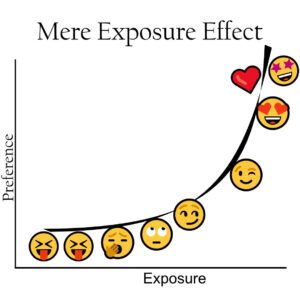
Have you and your friend ever agreed on an artist that you both didn’t care for, only to find out a few years later that your friend ended up liking that artist?
What causes this effect? In a word; marketing.
In the realm of pop culture, few names are as ubiquitous as Taylor Swift’s. Her journey from a country music darling to a global pop sensation is often attributed to her catchy tunes and relatable lyrics. However, there’s a deeper psychological layer to her success that involves sophisticated marketing strategies and the human psyche’s response to them.
Taylor Swift’s rise to stardom can be seen as a case study in the power of mass marketing and its ability to shape public perception. Record labels, aware of the lucrative potential of creating a pop icon, invest heavily in marketing to elevate artists like Swift from relative obscurity to international fame. This process involves a relentless promotional push, leveraging various media channels to create a pervasive presence that can influence consumer behavior.

The psychological principle at play here is known as the mere exposure effect, which suggests that people tend to develop a preference for things merely because they are familiar with them. In Swift’s case, her constant visibility through music videos, advertisements, and media appearances increases her likability among the masses. It’s a form of consumer inundation where the repeated exposure to an artist’s work leads to a gradual acceptance and, eventually, fandom.
The success of Taylor Swift is not just a tale of ‘good song writing’ and charismatic performances; it’s a narrative woven with the threads of psychological marketing principles. It demonstrates how strategic branding, coupled with an understanding of human behavior, can create a perception of popularity that becomes self-sustaining. As Swift continues to break records and captivate audiences, her career offers valuable insights into the intricate dance between marketing and psychology in the making of a pop star.
